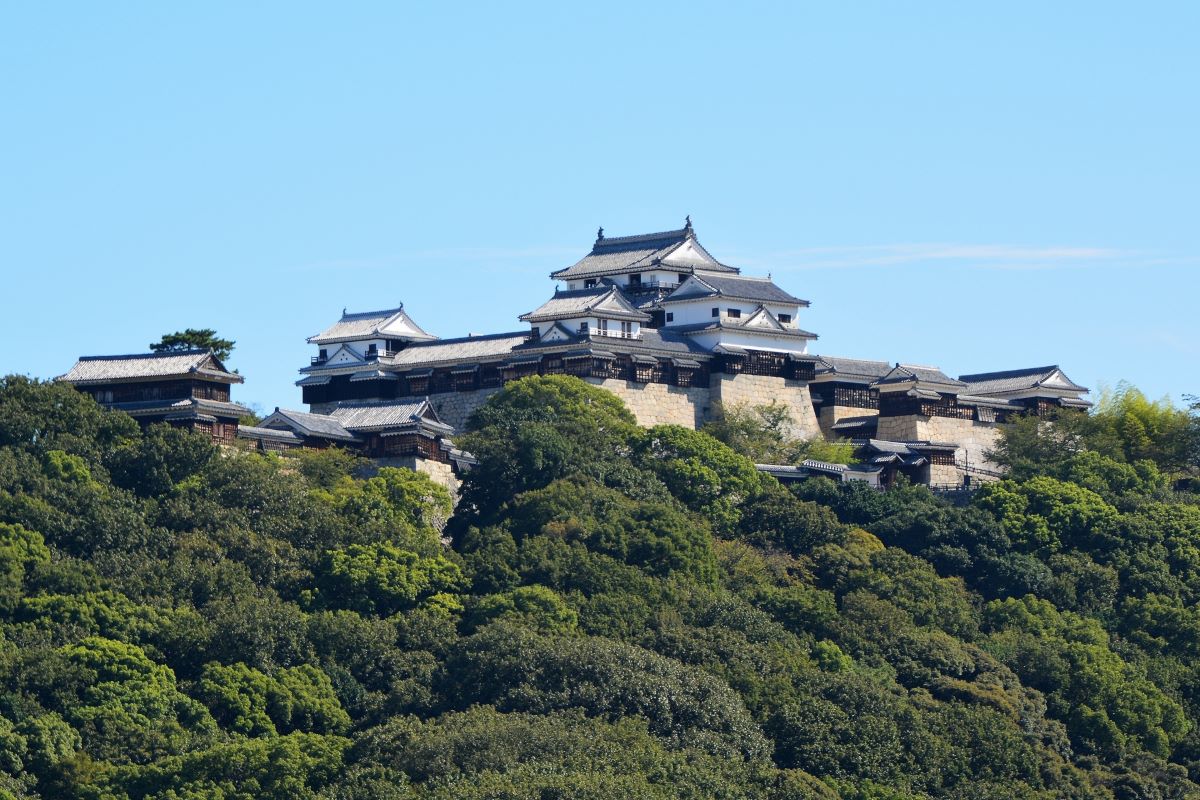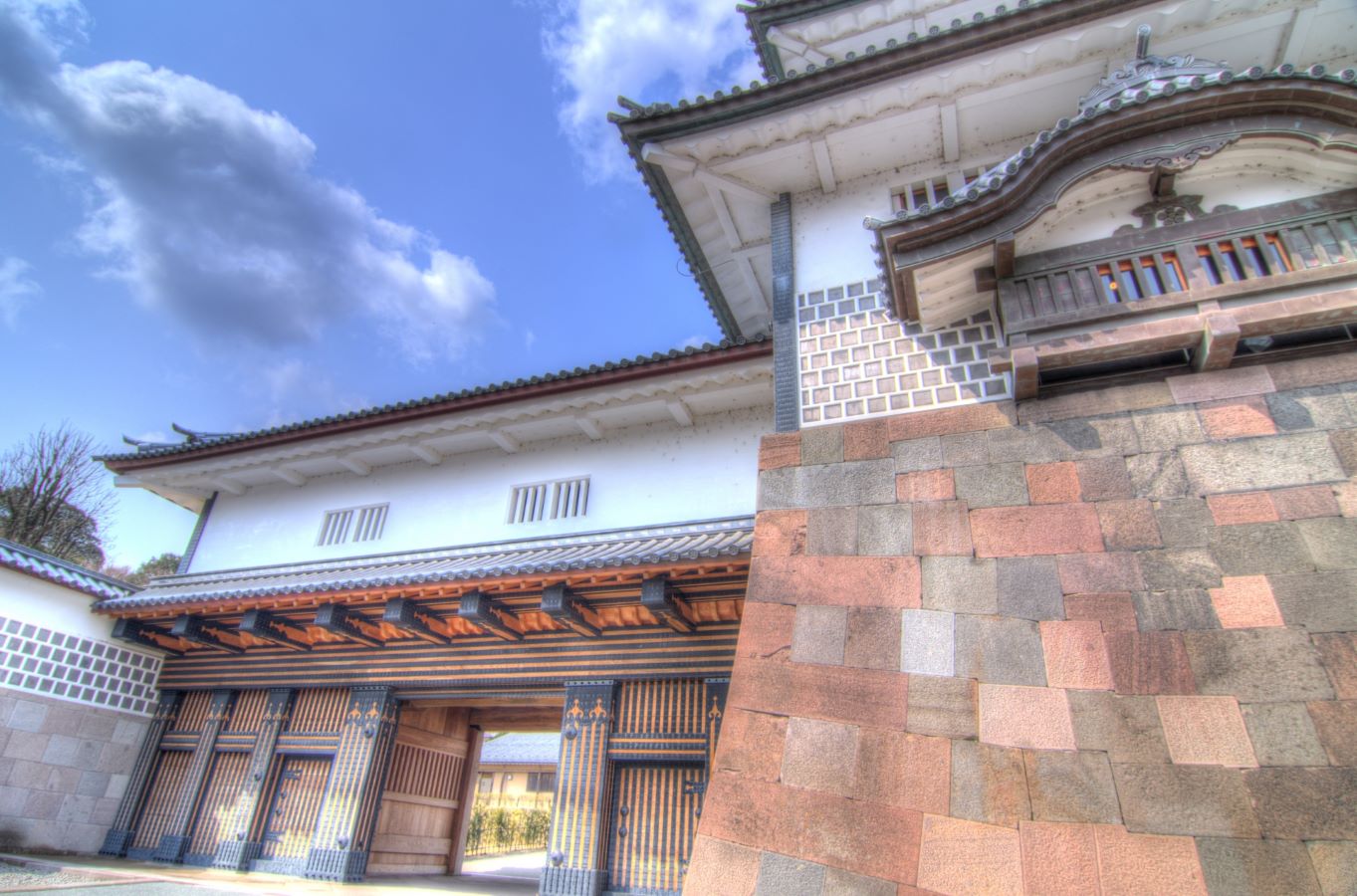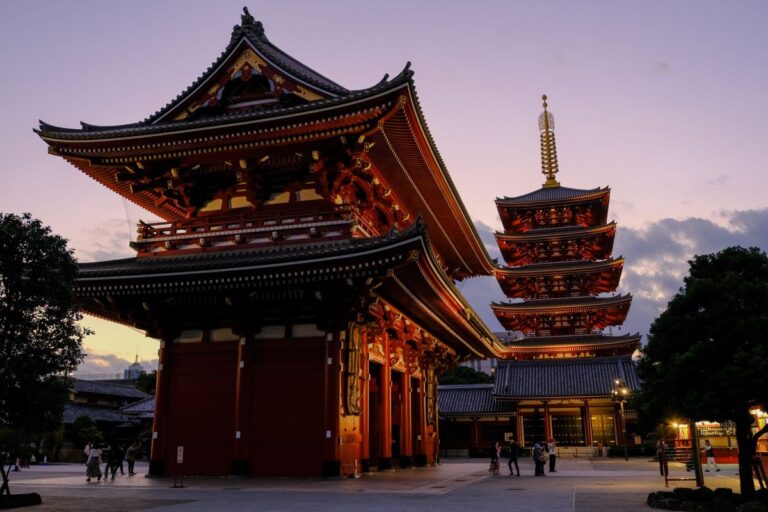Japanese castles, also known as “shiro,” are an iconic symbol of Japan’s rich cultural heritage. These castles were built during the feudal period, which lasted from the 12th to the 19th century. They served as fortresses for samurais, powerful feudal lords, and the emperor’s army. Today, these castles are popular tourist attractions and an important part of Japan’s history.

Japanese castles are known for their unique architectural style, which combines both functionality and beauty. They were built to withstand attacks from enemy forces, with features such as thick walls, moats, and intricate defense systems. At the same time, they were designed to be visually striking, with ornate roofs, decorative carvings, and impressive towers.

Visitors to Japan can explore a wide range of castles, each with its own unique history and architectural features. Some of the most famous castles include Himeji Castle, Matsumoto Castle, and Osaka Castle. These castles offer a glimpse into Japan’s feudal past and are a must-see for anyone interested in history or architecture.
History of Japanese Castles

Japanese castles have a rich history dating back to the 15th century. Originally built as fortresses to protect against enemy attacks, castles evolved over time to become symbols of power and authority for feudal lords.
The first castles were simple structures made of wood and stone, with moats and walls to protect against invaders. However, as warfare became more advanced, so did castle design. Castles were built higher and with thicker walls to withstand cannon fire, and defensive features like hidden passages and trap doors were added to outsmart attackers.
During the Edo period, Japan experienced a long period of peace, and castles began to serve more as residences for lords and their families. The decorative features of castles became more elaborate, with intricate carvings, paintings, and gardens added to showcase the wealth and status of the lord.
Unfortunately, many of Japan’s original castles were destroyed during World War II, but efforts have been made to rebuild and restore them to their former glory. Today, many Japanese castles are popular tourist attractions, offering visitors a glimpse into Japan’s rich history and culture.
Types of Japanese Castles
Japanese castles are known for their unique architecture and design. They were built to serve purposes, such as defense, administration, and residence. There are types of Japanese castles, each with its own distinct features.
Hirajiro: Hirajiro, also known as flatland castles, were built on flat terrain and were mainly used for military purposes. They were typically surrounded by moats and earthen walls. Hirajiro castles were simple in design, with a few buildings and a central keep.

Hilltop Castles: Hilltop castles, also known as yamajiro, were built on hills and mountains for strategic purposes. They offered a clear view of the surrounding area and were difficult to attack. Hilltop castles were often built with multiple layers of walls and gates.

Water Castles: Water castles, also known as suijō, were built on or near bodies of water, such as lakes or rivers. They were designed to take advantage of the natural water features for defense. Water castles often had elaborate moats and water systems to control the flow of water.
Flatland-Mountain Castles: Flatland-mountain castles, also known as hirayamajiro, were built on the border between flatland and mountainous terrain. They combined the features of both hirajiro and yamajiro castles, with multiple layers of walls and gates.

Palace Castles: Palace castles, also known as gosho, were built for the residence of the ruling family or nobles. They were often built in urban areas and had elaborate gardens and courtyards. Palace castles were not designed for defense, but for luxury and comfort.
Each type of Japanese castle has its own unique features and history. Visitors to Japan can explore these castles and learn about the fascinating history and culture behind them.
Famous Japanese Castles

Japan is famous for its castles, which were built during the feudal period between the 12th and 19th centuries. These castles were built for defensive purposes and as residences for feudal lords. Many of them were destroyed during wars and natural disasters, but some have been preserved and are now popular tourist attractions. Here’s a few of the most famous Japanese castles:
Himeji Castle
Himeji Castle is a UNESCO World Heritage Site and is considered one of the most beautiful castles in Japan. It was built in the 14th century and was renovated in the 17th century. The castle has survived wars and natural disasters and is now a popular tourist attraction. You can explore the castle’s many rooms and climb to the top of the castle’s main tower for a breathtaking view of the surrounding area.
Matsumoto Castle
Matsumoto Castle is also known as the “Crow Castle” because of its black exterior. It was built in the 16th century and is one of the few remaining original castles in Japan. You can explore the castle’s many rooms and climb to the top of the castle’s main tower for a panoramic view of the city.
Hikone Castle
Hikone Castle is another original castle that was built in the 17th century. It is on a hill overlooking Lake Biwa and is considered one of the most beautiful castles in Japan. You can explore the castle’s many rooms and climb to the top of the castle’s main tower for a view of the surrounding area.
And this is just a sample of the many famous Japanese castles. Each castle has its own unique history and architecture, making them all worth a visit for anyone interested in Japanese history and culture.
Architecture of Japanese Castles
Japanese castles are known for their unique architectural style that reflects the country’s rich history and culture. Unlike European castles, Japanese castles were not built for the purpose of defense, but rather as a symbol of power and wealth. The architecture of Japanese castles is characterized by their impressive size, elaborate decorations, and intricate design.
The most important part of a Japanese castle is the central tower, or donjon, which is the tallest and most prominent structure in the castle. The donjon is typically constructed with multiple stories, with each level having a specific purpose. The first floor was used for storage, the second floor for living quarters, and the upper floors were used for defense.
Another important feature of Japanese castles is the use of curved roofs, known as ‘hip-and-gable’ roofs. These roofs are designed to withstand strong winds and heavy rain, which are common in Japan. The roofs are often decorated with intricate wooden carvings, which add to the overall beauty of the castle.
Japanese castles also feature a unique system of gates and walls that were designed to protect the castle from intruders. The castle grounds were surrounded by a series of walls, with each wall having a specific purpose. The outermost wall was designed to keep out intruders, while the inner walls were used for defense. The gates of the castle were also strategically placed to make it difficult for intruders to enter the castle.
Decline and Restoration of Japanese Castles

During the Meiji Restoration in the late 19th century, Japanese castles were seen as symbols of the old feudal system and were often destroyed or repurposed for other uses. Many castles were dismantled and their materials were sold off, while others were turned into government buildings or parks.
However, in the 20th century, there was a renewed interest in Japanese castles as historical and cultural landmarks. Some castle ruins were restored, while others were rebuilt using traditional construction methods and materials. Today, many Japanese castles have been designated as National Treasures or Important Cultural Properties, and attract millions of visitors each year.
One notable example of a restored Japanese castle is Himeji Castle in Hyogo Prefecture. After years of neglect and damage from natural disasters, the castle underwent a massive restoration project in the 20th century. The project took years and involved over a hundred craftsmen, but the end result was a beautifully restored castle that is now a UNESCO World Heritage Site.
Another example is Matsumoto Castle in Nagano Prefecture, which was also restored in the 20th century. The castle is unique in that it has both a black exterior and a wooden interior, and is often referred to as the “Crow Castle” because of its dark color.
Despite the efforts to restore and preserve Japanese castles, many still face challenges such as natural disasters and aging infrastructure. However, ongoing restoration projects and maintenance efforts ensure that these important cultural landmarks will continue to be enjoyed by future generations.
Visiting Japanese Castles
Visiting Japanese castles is a great way to learn about Japan’s rich history and culture. These castles were once the homes of powerful feudal lords and samurai warriors, and they offer a glimpse into Japan’s past. Here are a few tips for visiting Japanese castles:
Choose Your Castle Wisely
Japan has many castles, but not all of them are worth visiting. Some castles have been reconstructed and lack historical authenticity, while others are in ruins and difficult to explore. Research the castles beforehand and choose one that fits your interests and preferences.
Learn About the Castle’s History
Before visiting a Japanese castle, take some time to learn about its history. Many castles have fascinating stories behind them, and knowing the history can enhance your visit. Some castles offer audio guides or guided tours that provide in-depth information.
Enjoy the Scenery
Japanese castles are often in scenic areas, such as on a hilltop or overlooking a river. Take some time to appreciate the natural beauty surrounding the castle, and don’t forget to take photos!



